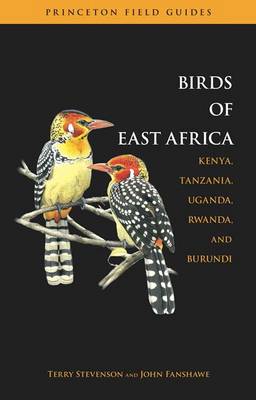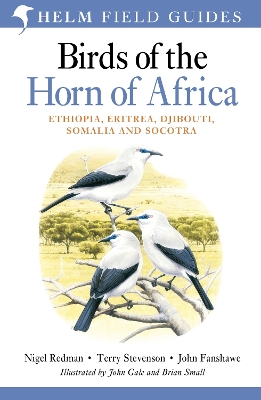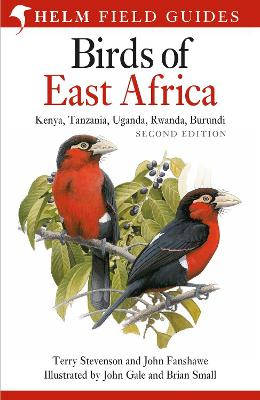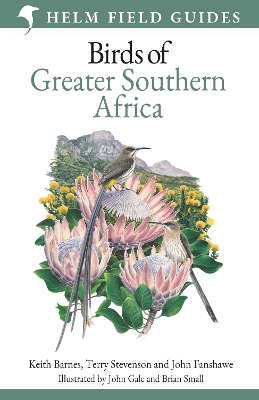Helm Field Guides
4 total works
The region's birds form a constantly colorful, noisy, and highly extroverted part of the landscape. The book is sure to become an indispensable guide for anyone interested in studying or conserving birds in East Africa, as well as the many visitors who simply want to enjoy the sheer beauty of its birds. This is the first comprehensive field guide to the countries of Kenya, Tanzania, Uganda, Rwanda, and Burundi Covers 1,388 species, with 3,400 color images on 287 plates. The features are: concise species accounts facing the plates describe appearance, status, range, habits, and voice; a color distribution map is given for each species; information on habitats, protected areas, and conservation issues; the essential guide to the birds of this spectacular region; an overview of East African birds East African environment; Seasonality Plumage Species accounts; common alternative names; conservation and threatened species; the local scene; and glossary, references, and an index.
The key features include: small and compact; comprehensive species; all distinctive plumages and races illustrated; color plates; illustrations; all species ranges mapped; and key protected and important bird areas mapped.
Field Guide to Birds of the Horn of Africa
by Nigel Redman, Terry Stevenson, and John Fanshawe
This is the second edition of the first field guide to the birds of this fascinating region, and a companion to Birds of East Africa by two of the same authors.
The Horn of Africa has the highest endemism of any region in Africa, and around 70 species are found nowhere else in the world. Many of these are confined to the isolated highlands of Ethiopia and Eritrea, but a large number of larks specialise in the arid parts of Somalia and adjoining eastern Ethiopia, whilst the island of Socotra has its own suite of endemic species. The region is also an important migration route and wintering site for many Palearctic birds.
Over 200 magnificent plates by John Gale and Brian Small illustrate every species that has ever occurred in the five countries covered by the guide, and the succinct text covers the key identification criteria. Special attention is paid to the voices of the species, and over 1000 up-to-date colour distribution maps are included.
This guide is an essential companion for birders visiting the region.
Field Guide to the Birds of East Africa
by Terry Stevenson and John Fanshawe
More than 1,300 species are illustrated with full details of all the plumages and major races likely to be encountered. Concise text describes the identification, status, range, habits and voice, with fully updated range maps for each species.
This authoritative book will not only be an indispensable guide to the visiting birder, but also a vital tool for those engaged in work to conserve and study the avifauna of the region – East Africa shelters a remarkable diversity of birds, many seriously endangered with small and vulnerable ranges.
This field guide is indispensable for the visiting birder, and a vital tool for anyone interested in the avifauna of this region.
Field Guide to Birds of Greater Southern Africa
by Terry Stevenson, John Fanshawe, and Keith Barnes
This spectacular field guide includes all resident, breeding and migrant species found in Greater Southern Africa.
Comprising South Africa, Lesotho, eSwatini, Namibia, Botswana, Zimbabwe, Malawi, Mozambique and Zambia, Greater Southern Africa is a vast region home to a truly extraordinary diversity of avifauna.
The latest in the Helm Field Guide series, Birds of Greater Southern Africa describes all 1,170 regularly occurring species that are likely to be encountered in the region, from the Wandering Albatross to the Pennant-winged Nightjar. Featuring 272 colour plates by three of the world’s leading bird illustrators, this practical guide also includes concise species accounts describing key identification features, status, range, habitat and voice; distribution maps for each species are also included.
Fully illustrated throughout, this is an essential reference guide for anyone visiting or living in this wildlife-rich area.



